
By Leith van Onselen
The Australian Bureau of Statistics (ABS) has just released trade data for the month of February, and it’s an improvement on January’s shocker – arguably affected by the Chinese New Year celebrations – where a deficit of -$971m was recorded (revised up from -$673m) – a whopping turnaround of -$2,229 million from December 2011’s trade balance.
In seasonally adjusted terms, Australia’s trade deficit roughly halved to -$480 million, although the deficit would have been much worse had the fall in exports of -$518m (to $24,425) not been more than offset by a reduction in imports of -$1,009m (to $24,905m).
Turning to the key charts, you can see that a significant portion of the fall in the value of total exports was accounted for by a reduction in coal exports (-$933 million). By contrast, iron ore exports actually rose in the month by $620 million; although they remained -$708 million below December’s balance:
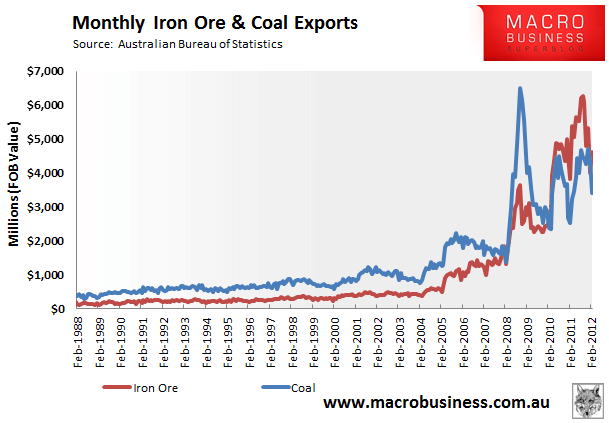
Iron ore was Australia’s largest single export commodity by value in February, accounting for 24% of total merchandise exports versus coal’s 18% share:
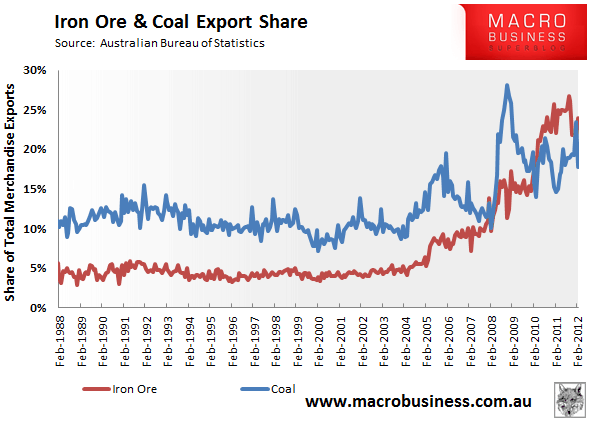
The fall in the value of coal exports in February was driven primarily by falling demand from Japan (Australia’s major buyer of coal). By contrast, the increase in iron ore exports was reflected in rising demand from China (Australia’s major buyer of iron ore) after the Chinese New Year celebrations-induced slump in January:
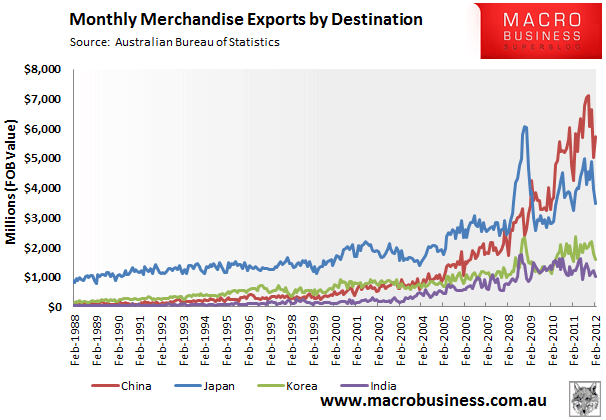
The share of total merchandise exports going to China rose markedly in February to 29.7% and is now near the peak level of 30.5% reached in October 2011:
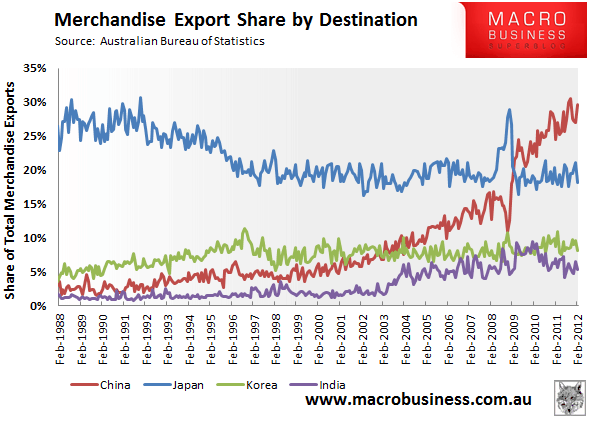
Given its status as Australia’s major producer of iron ore, Western Australia’s exports rose by $801 million (+10%) in February, whereas as exports in Australia’s coal capital – Queensland – fell by -$524 million (-13%) in the month. Both market’s exports, however, remain well below their respective recent peaks:
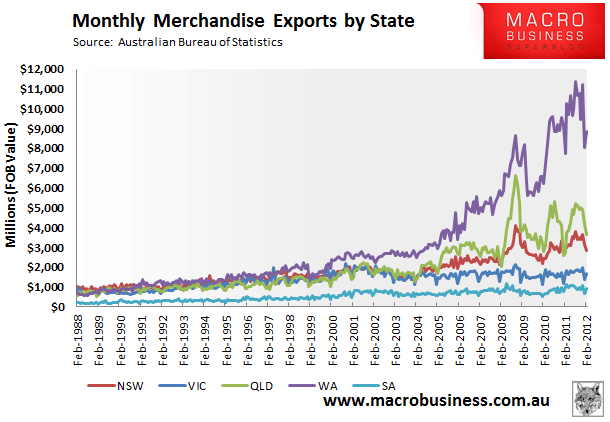
Reflecting the decline in the value of coal exports, Queensland’s merchandise trade surplus has nearly evaporated, falling to only $430 million in February versus $1,698m in December 2011:
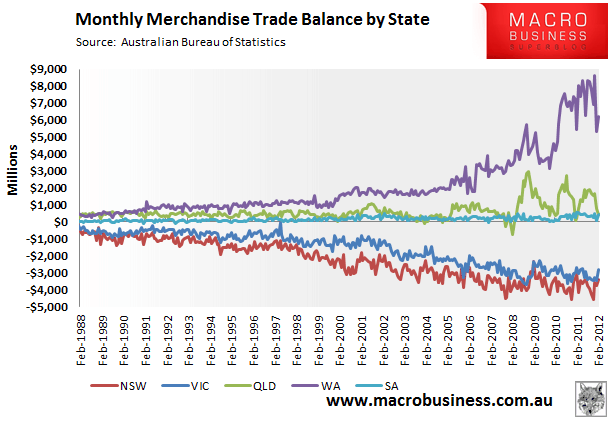
Finally, you can also see the deterioration in Australia’s services export, which have been trending down since late 2008 on account of the high Australian dollar, and fell by another $141 million in February:
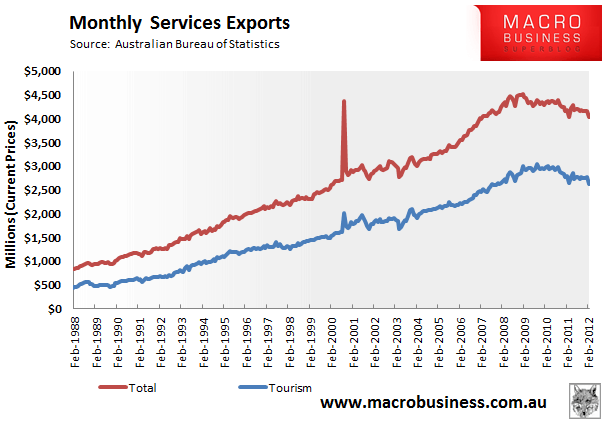
Reflecting the increased purchasing power, Australia’s services imports (mostly overseas travel and tourism) has surged, which has thrown Australia’s services trade balance into deficit, which deteriorated by another -$80 million in February:
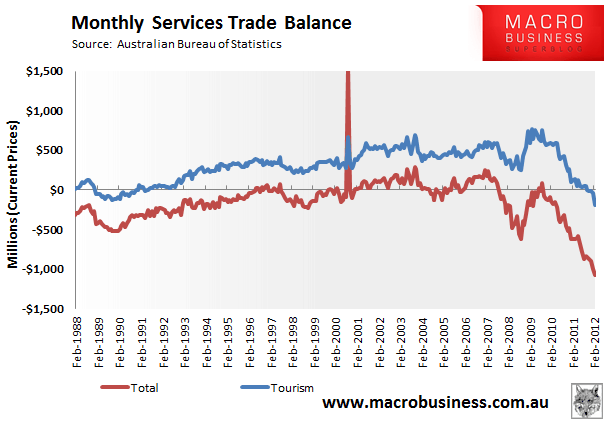
Notwithstanding the small rise in commodity prices in March, it looks like the days of Australia running large trade surpluses have passed and that trade deficits might be the ‘new normal’.

